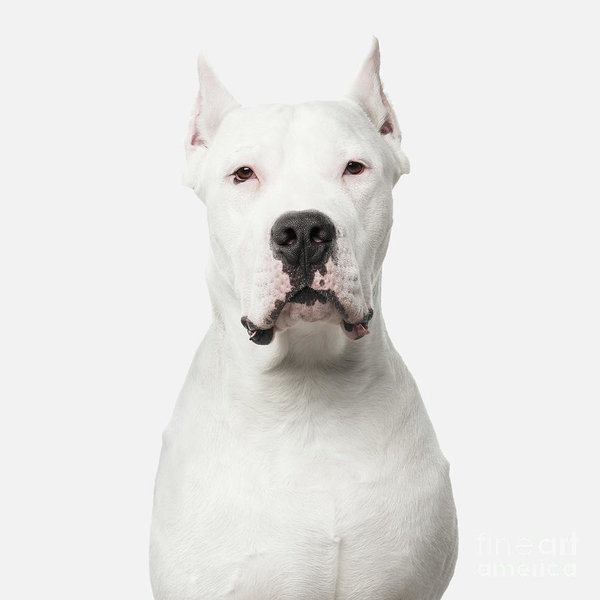
Students of purebred dogs will sometimes hear the phrase, “catch dog,” or come across it in a breed description, and while it’s exactly what it sounds like, there’s a bit more to it.
A “catch dog” breed was originally developed to literally “catch” an animal, usually a boar or cattle (but sometimes bears), and hold on to it until the rancher or hunter arrived, however long that was. Needless to say, this was not, and is not, a job for sissies.
Catch dogs are often teamed with baying dogs that are used first to chase a boar down. Once the wild pig is cornered or attempts to fight back its pursuers, catch dogs are then released to incapacitate the animal typically by grabbing hold of the base of their ear, and holding them down by the head.
We might mention at this point that we like pigs, cattle, and bears, and don’t wish unnecessary suffering on any of them. We understand, too, the role that catch dogs played in helping early settlers keep their families and livestock safe from predators in the wild as they eked out a life in untamed America. Wild boars and feral pigs continue to be a problem in many areas in the country where livestock and agriculture need to be protected. Wild hogs eat pretty much anything, and their rooting and wallowing behaviors create runoff, a huge contributor to the pollution of natural water resources. Add to this their prolific breeding (they’re sexually mature after 6 months, and can have two litters a year, each litter having 10 to 15 piglets), and the fact that they have no natural predators, and well, there you go. The US Department of Agriculture estimates that damage these animals cause runs in excess of several billion dollars worth every year, and this is why wild boars and feral pigs are hunted even today. That said, there is, in our view, a humane way, and an inhumane way to use catch dogs on hogs. We hope this is always remembered.
Catch dogs have to be able to hold their own, if not dominate, in a show down with a boar. They need to have strong jaws that enable them to hold down an adult (and very angry) boar. They tend to be big, muscular, and fierce, but instinct and courage is what the dog brings to the table. Responsible catch dog owners train their dogs property, and outfit their dogs in protective gear that includes vests, tail and neck protectors, and paw boots.
There are quite a few catch dog breeds, and what they seem to have in common is a descent from Molosser or Old English Bulldogs. Among them are the Blue Lacy, Catahoula Leopard Dog, Alapaha Blue-Blood Bulldog, Dogo Argentino, and the so-called Bandog.
Image:Dogo Argentino by Sergey Taran is available as a print in different formats here.

Wild and feral hogs are a problem in all fifty states now. They do more than $800,000,000 in damage to US agriculture every single year. A small group of rooting hogs can destroy over $30,000 in crops in a single night.
They are also incredibly fecund and extremely destructive to our precious wild places and native species, particularly ground-nesting birds, small reptiles, and small mammals. They are an invasive, non-native species and should be aggressively eliminated. Unfortunately, because of the way they move, it’s very difficult to cause much impact to their population with guns and traps. Dogs are basically the only effective AND ecologically sound method of hunting them in off-road areas.
Hog dogs and the hunters who work side-by-side with them do dangerous work, but it is absolutely necessary to the provision of food and protection of our natural wildland.
Many people involved with hog hunting are concerned that the dog fanciers and pet people will not understand the necessity of the work they do, the connection with their dogs, and the level of concern for their well-being. It’s hard, dangerous, and sometimes ugly work. They are afraid that in this HSUS, “fur mommy” world, the AKC and pet owning public will cheerfully throw them under the bus.
I urge everyone reading this page to respect this important work, these breeds, and the people who quite literally lay their lives on the line to protect our food crops and precious wild ecosystems. If the opportunity comes up to speak favorably of them, or especially to support them legislatively, PLEASE act accordingly. It is very, very important that we do.
Thank you for an informed comment, Katherine! For folks not on Facebook, Katherine had left her comments on our Facebook page, and we asked that she leave them here for more people to see. As the owner of a “catch dog” breed, she knows of what she speaks!
Many years ago I hunted boar in Texas with these guys (mostly black mouth curs). If the boar wasn’t too big they would grab it, if it was big they would bay it. The guide told me “There are old hog dogs and there are bold hog dogs, but there are no old, bold hog dogs”.
Humane is often enough that is taken to the point of asserting that there should never ever be anything that might “hurt” the prey animal until the kill shot. That’s not nature. First, hogs fight amongst themselves for dominance. Then there are other natural hazards like broken legs, disease, etc. In the areas where mountain lions or wolves remain in the United States, or alligators in swampland, the death of these animals isn’t going to be any worse than if a dog got them. The point of a catch dog is to enable the hunter to dispatch the animal as quickly and efficiently as possible. And that is what humane really means.